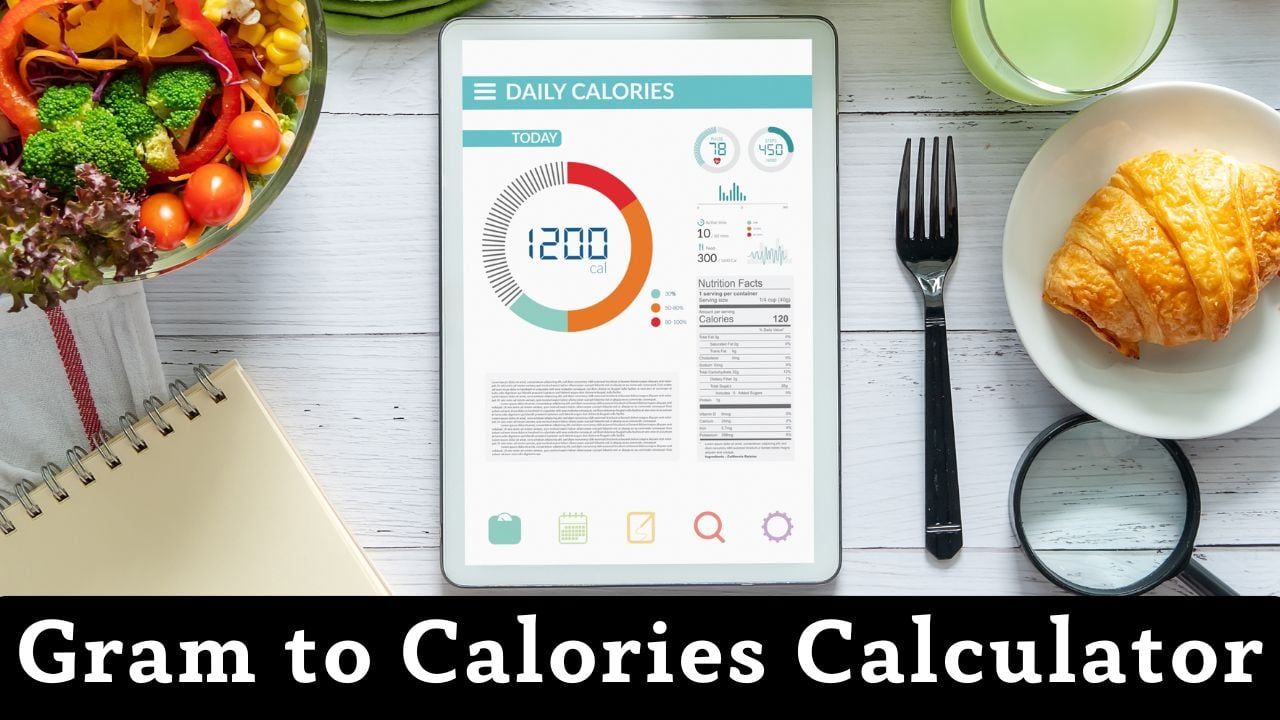Grams To Calories
Quick and accurate macronutrient calculator

Food Energy: Grams to Calories Guide 🍽️
Ever wondered how your food turns into energy? Let's break down the basics of calories in different nutrients! Research (nutrition studies) shows that understanding food energy helps make better dietary choices. Let's explore how different nutrients contribute to your daily energy needs!
Food Energy Basics 🔍
Your body gets energy from three main nutrients (energy sources): proteins, carbohydrates, and fats. Each provides different amounts of energy per gram. These values helps you make informed food choices!
Making It Simple 📊
Recent studies (digestive research) help us understand how our bodies process different nutrients. Let's see how many calories each nutrient type provides!
Calories Per Gram of Nutrients
Essential Nutrients
| Nutrient Type | Calories per Gram | Common Sources |
|---|---|---|
| Fats | 9 calories | Oils, nuts, avocados |
| Proteins | 4 calories | Meat, eggs, legumes |
| Carbohydrates | 4 calories | Bread, rice, fruits |
| Fiber | 2 calories | Vegetables, whole grains |
| Alcohol | 7 calories | Alcoholic beverages |
Quick Calculation Examples
| Food Item (100g) | Protein (g) | Carbs (g) | Fat (g) | Total Calories |
|---|---|---|---|---|
| Chicken Breast | 31g (124 cal) | 0g (0 cal) | 3.6g (32 cal) | 156 calories |
| Brown Rice | 2.6g (10 cal) | 23g (92 cal) | 0.9g (8 cal) | 110 calories |
| Avocado | 2g (8 cal) | 9g (36 cal) | 15g (135 cal) | 179 calories |
Know Food Energy:
Not All Calories Are Equal
Different nutrients provide various health benefits beyond just energy. Focus on balanced nutrition rather than just calories.
Simple Math
To find total calories: multiply grams of each nutrient by its calorie value and add them up!
Quality Matters
Choose nutrient-dense foods that provide vitamins and minerals along with calories.
Track Smart
For personalized nutrition planning, check out our macro calculator with meal plans!
Understand Nutrition Better
How Food Becomes Energy
Recent research (metabolism studies) helps us understand how our body processes different foods:
Key Points to Remember:
- Proteins: Essential for muscles and repair, 4 calories per gram
- Carbohydrates: Quick energy source, 4 calories per gram
- Fats: Important for hormones and long-lasting energy, 9 calories per gram
- Fiber: Helps digestion and keeps you full, 2 calories per gram
Making It Work for You
Food energy helps you make better choices. Here's what to keep in mind:
- Balance is Key: Include all nutrients in your meals for optimal health
- Portion Awareness: Use food scales or measuring cups for accuracy
- Listen to Your Body: Pay attention to hunger and fullness cues
Remember
Everyone's needs are different! Consider these factors:
- Your activity level
- Health goals
- Age and lifestyle
- Medical conditions
- Personal preferences
Nutrition & Calorie FAQs 🍽️
Get answers to common questions about food energy and nutrient calculations! Our expert insights help you understand how to convert grams to calories and make informed dietary choices.
How do I convert grams to calories? 📊
The conversion depends on the nutrient type (nutrition studies). Multiply grams by: 9 for fats, 4 for proteins, 4 for carbohydrates, 2 for fiber, and 7 for alcohol. For example, 10g of protein = 10 × 4 = 40 calories.
Why do different nutrients have different calorie values? 🔬
According to research (metabolic studies), each nutrient has a unique molecular structure that releases different amounts of energy when broken down. Fats are more energy-dense, while proteins and carbs have simpler structures.
How accurate are food label calorie counts? ⚖️
Studies (digestive research) show that food labels can have a margin of error of up to 20%. This is because actual calorie absorption varies based on food preparation, digestibility, and individual metabolism.
Should I focus on calories or nutrients? 🥗
Research (nutrition research) suggests focusing on both. While calories matter for weight management, nutrient quality is crucial for health. Choose nutrient-dense foods that provide vitamins, minerals, and fiber along with their calories.
How can I track my nutrient intake accurately? 📱
Use a food scale for accurate gram measurements, read nutrition labels carefully, and consider using our macro calculator for personalized tracking. Remember that whole, unprocessed foods may vary in calorie content based on ripeness and variety.
What's the difference between calories and kilocalories? 🤔
A kilocalorie (kcal) is what we commonly call a "calorie" on food labels. Technically, 1 kilocalorie = 1,000 calories, but in nutrition, we use these terms interchangeably. For example, when a food label says "100 calories," it actually means 100 kilocalories.
How do I convert joules to calories? ⚡
According to our energy conversion guide, to convert joules to calories, multiply the joule value by 0.239006. For example, 5 joules = 5 × 0.239006 = 1.195029 calories. This conversion factor is based on the standard energy equivalence between joules and calories.
What's the difference between joules and calories? 🔄
A joule is the metric system's standard unit of energy, defined as the energy needed to move an object with one newton of force over one meter. A calorie, however, is the energy needed to raise one gram of water's temperature by one degree Celsius (from 14.5°C to 15.5°C).
When should I use joules vs calories? 🤓
In nutrition and fitness, calories are more commonly used, especially in food labels and dietary planning. Joules are typically used in scientific and physics calculations. For dietary purposes, stick to calories (or kilocalories) as they're the standard in nutritional contexts.

Manish is a NASM-certified fitness and nutrition coach with over 10 years of experience in weight lifting and fat loss fitness coaching. He specializes in gym-based training and has a lot of knowledge about exercise, lifting technique, biomechanics, and more.
Through “Fit Life Regime,” he generously shares the insights he’s gained over a decade in the field. His goal is to equip others with the knowledge to start their own fitness journey.
